Trophy Soviet 76,2-mm guns: the experience of the Germans in World War II
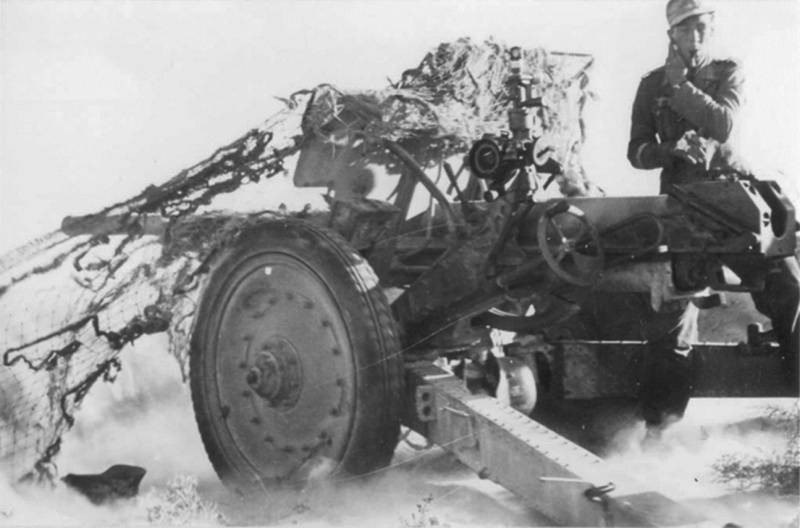
Trophy anti-tank artillery in the German Armed Forces. Talking about the anti-tank guns used in the armed forces of Nazi Germany, one can not help but mention the Soviet-made divisional 76,2-mm guns.
In the Red Army, divisional artillery was entrusted with a wide range of tasks. To combat the openly located manpower, the use of unitary loading shots with shrapnel grenades equipped with distance tubes was provided. High-explosive 76,2-mm shells could be successfully used against infantry, unarmored vehicles, as well as for the destruction of light field fortifications and wire fences. The defeat of armored vehicles and pillbox embrasures when firing direct fire was provided by armor-piercing shells. Divisional artillery could also fire incendiary, smoke and chemical shells.
As of June 22, 1941, in active units and warehouses there were more than 10 divisional guns of 500 mm caliber, including 76,2-mm divisional guns arr. 76/1902, modernized 30 mm guns with an extended barrel, manufactured after 76,2, 1931 mm guns mod. 76,2, 1933-mm gun F-76 mod. 22 and 1936-mm guns of the 76 model, known as the F-1939USV. According to the pre-war states in the rifle, cavalry and motorized divisions as part of the light artillery regiment, in addition to four 22-mm howitzers, there should have been eight 122-mm guns. AT tank the division had an artillery regiment: three light divisions of four 76,2 mm guns and eight 122 mm howitzers. After 1942, the number of 76,2 mm guns in artillery regiments increased to 20 units.
As you know, any artillery gun becomes anti-tank when enemy tanks are in its reach. This fully applies to divisional weapons, which almost more often than specialized anti-tank guns were involved in the fight against enemy armored vehicles. However, the capabilities of various Soviet divisional guns were not the same.
76 mm divisional gun mod. 1902 / 30
By June 1941, the 76-mm divisional cannon of the 1902 / 30 model was obsolete and technically obsolete. This artillery system was a modernized version of the divisional cannon of the 1902 model of the year. The gun, created in 1930 in the design bureau of the Motovilikhinsky plant, differed from its predecessor in the introduction of a balancing mechanism and significant changes in the carriage.
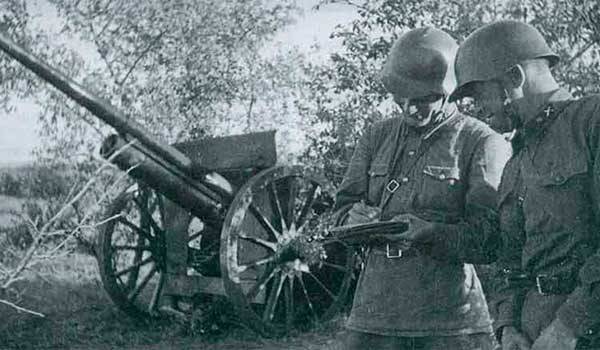
Until 1931, a modification with a barrel length of 30 calibres was produced, up to 1936 - with a barrel length of 40 calibers. The mass of the gun in the combat position was 1350 kg (with a long barrel). Due to the relatively low weight, the calculation from 7 allowed a person to roll the “division” a short distance without attracting horse traction, but the absence of springs and wooden wheels allowed transportation at a speed of no more than 7 km / h. High-explosive high-explosive steel fragmentation grenade UOF-354 weighing 6,2 kg contained 710 g of explosives and left the barrel with a length of 3046 mm with an initial velocity of 680 m / s. The tabular firing range was 13000 m. Vertical aim angles: from −3 to + 37 °. Horizontal - 5,7 °. The piston shutter provided combat rate of fire: 10-12 rds / min.
While the UBR-354A armor-piercing projectile weighing 6,3 kg had an initial speed of 655 m / s and at a distance of 500 m it could normally penetrate 70 mm armor, the anti-tank capabilities of the gun did not meet modern requirements. First of all, this was due to the small sector of firing in the horizontal plane (5,7 °) allowed by a single-beam carriage, and outdated sights. However, well-prepared and well-coordinated calculations in some cases successfully reflected the attacks of enemy armored vehicles, inflicting heavy losses on the enemy.
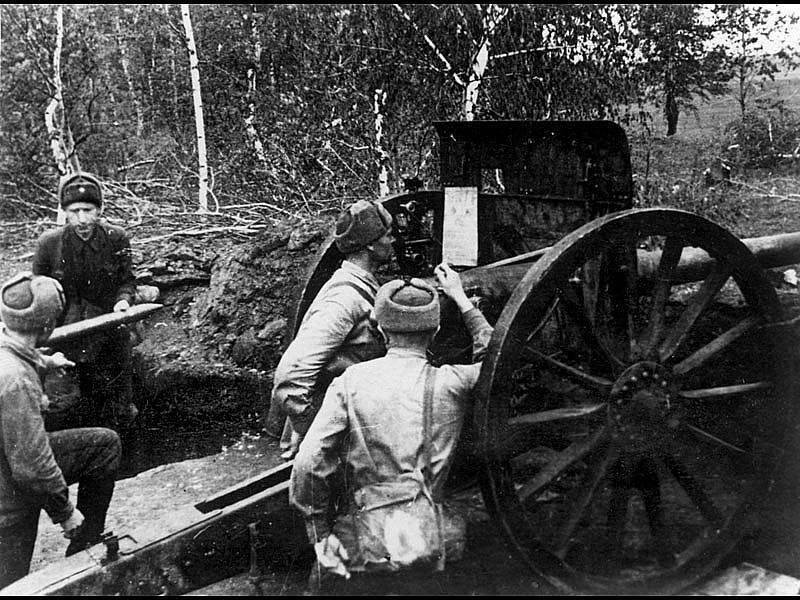
The use of obsolete divisional weapons in anti-tank defense was also limited due to the shortage of 76,2-mm armor-piercing shells in the initial period of the war. In June of the 1941 of the year, there were slightly more than 24000 of armor-piercing shots in the warehouses. Under the prevailing conditions, German tanks fired fragmentation and shrapnel grenades, with fuses put on strike with a slowdown. At a range of up to 500 m, a fragmentation projectile could penetrate armor with a thickness of 25 mm, armor penetration of shrapnel grenade was 30 mm. In 1941, a significant part of the German tanks had a frontal armor thickness of 50 mm, and when firing fragmentation and shrapnel shells its penetration was not provided. At the same time, a shrapnel grenade with a heavy warhead equipped with lead bullets sometimes worked as a deformable high-explosive armor-piercing shell equipped with plastic explosives. When such a projectile encounters a solid obstacle, it “spreads” over the surface. After undermining the explosive charge in the armor, a compression wave forms and the back surface of the armor is destroyed with the formation of spalls that can hit the internal equipment of the machine or crew members. However, in view of the fact that the shrapnel grenade contained only 86 g of black powder, its acronym damaging effect was small.
Prior to the cessation of mass production in 1936, the industry supplied more than 4300 76-mm division guns mod. 1902 / 30 gg., Of which in the western military districts were about 2400 guns. More than 700 of such guns were captured by the advancing German troops, in the summer-autumn of 1941.
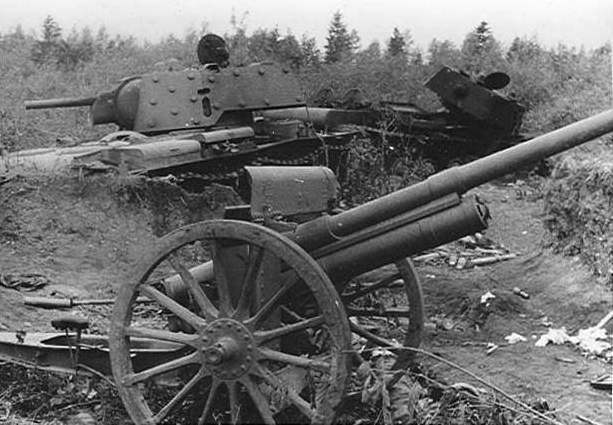
Although the enemy did not appreciate the capabilities of the outdated “three inches”, they were adopted by the German army under the designation 7,62 cm FK295 / 1 (r) and 7,62 cm FK295 / 2 (r) (variants with barrel lengths in 30 and 40 calibres, respectively). On some guns, wooden wheels were replaced with metal wheels with rubber tires. These guns in the amount of approximately 100 units fought on the Eastern Front, several dozen guns were used to arm German armored trains. Limited use of 76,2-mm gun mod. 1902 / 30 was probably due to the fact that Germany in Poland and France captured a large number of 75-mm divisional guns of French production Canon de 75 mle 97 / 33, which in their characteristics were close to Soviet 76,2-mm guns.
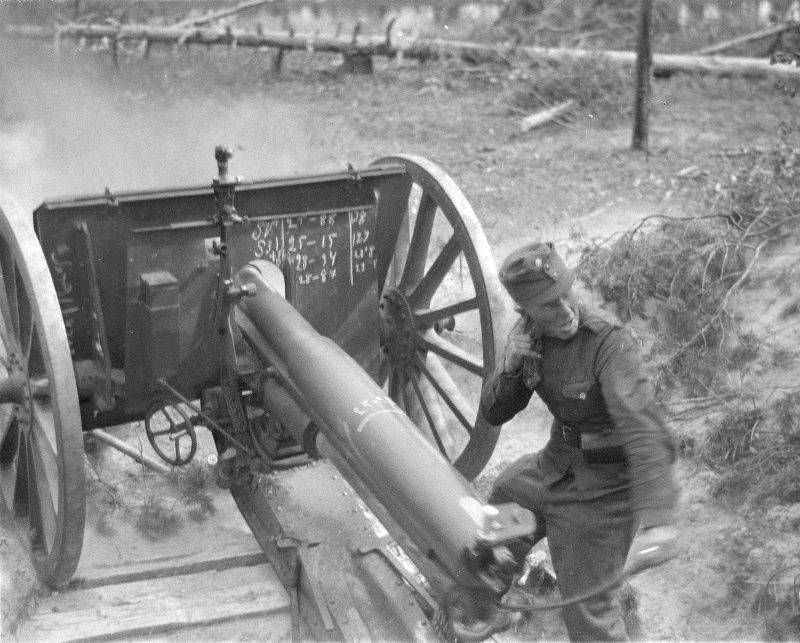
A significant number of 76,2-mm guns mod. 1902 / 30 was in Finland, where they received the designation 76 K / 02-30 and 76 K / 02-40. Part of the cannons was captured by Finland during the Winter War and, apparently, the Germans shared with the Finns their trophies received in the 1941 year. A number of trophy divisional guns were stationed in stationary positions in fortified areas.
Soviet divisional 76,2-mm guns arr. 1902 / 30 were mounted on round concrete foundations, and a wheel was mounted under the coulter, which made it possible to quickly deploy the implement in a horizontal plane. Although the "three-inch" was hopelessly outdated by the beginning of the 1940's, with proper use they could pose a threat to light and medium Soviet tanks.
76,2-mm universal gun F-22 arr. 1936
Due to the fact that by the beginning of the 1930's, the 76,2-mm gun arr. 1902 / 30 was considered obsolete, a competition was announced in the USSR for the creation of a new divisional weapon. In 1934, at the request of M.N. Tukhachevsky in the list of requirements for divisional artillery requirements was included the ability to conduct anti-aircraft fire. In March 1935, the designer V.G. Grabin introduced three 76,2-mm F-22 guns, designed to use anti-aircraft gun shots arr. 1931 g. (3-K). In order to reduce recoil when using anti-aircraft shells, the divisional gun was equipped with a muzzle brake.
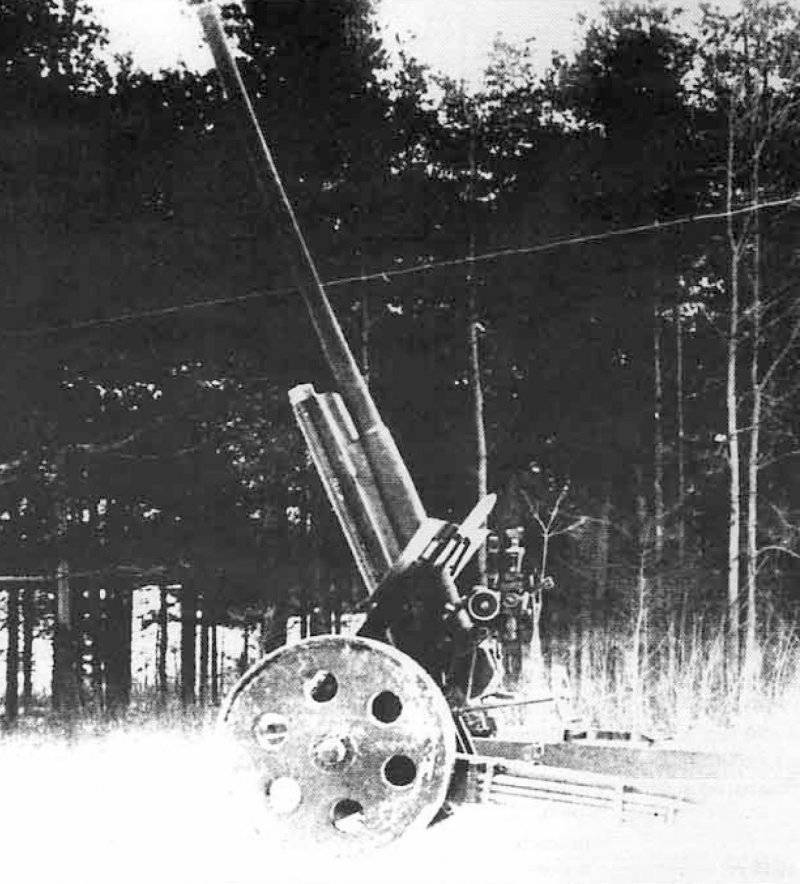
Already during the tests, the military made adjustments to the requirements for the gun. The use of a muzzle brake was considered unacceptable. In addition, it was prescribed to abandon the use of anti-aircraft ammunition with a high initial velocity of the shell of the gun in favor of cartridges "three-inch" arr. 1902, of which a huge amount was accumulated in the warehouses. The transition to a new, more powerful shot, despite all the advantages it provided, was considered unacceptable for economic reasons. At the same time, the F-22, designed for more powerful ballistics, had a large margin of safety and, as a consequence, the potential for firing with a higher initial velocity of the projectile compared to standard ammunition.
In May 1936, the 76-mm universal divisional gun mod. 1936 was adopted, and before the end of the year it was supposed to deliver at least 500 new artillery systems to the customer. However, due to the fact that the new gun compared to the 76,2-mm gun mod. 1902 / 30 was much more complicated and expensive, plans for the delivery of "universal" divisional weapons to the army were failed. Before the cessation of production in 1939, it was possible to deliver guns arr. 2932
The weight of the gun in combat position, depending on the different batches of release, was 1650 - 1780 kg. Combat rate of fire: 15 rds / min. Vertical angles: from −5 to + 75 °. Horizontal - 60 °. Compared with the "divisions" arr. 1902 / 30 g. Armor penetration guns mod. 1936 g. Significantly increased. In the barrel 3895 mm long, the UBR-354A armor-piercing projectile was accelerated to 690 m / s and, at a right angle, could penetrate 500 mm armor at a range of 75 m. The gun had suspension and metal wheels with rubber tires, which made it possible to tow it along the highway at a speed of 30 km / h. But since the mass of the gun in the transport position was 2820 kg, six horses, a caterpillar tractor or a ZIS-6 truck were required to transport it.
During operation, it turned out that the gun has not high reliability and excessive weight and dimensions. The design of the gun and the location of the guidance organs were not optimal for using it as an anti-tank. The sight and the mechanism of vertical guidance were on opposite sides of the barrel, respectively, the guidance of the gun could not be carried out by the gunner alone. Although the gun arr. 1936 g. Was created as a "universal" with the ability to conduct anti-aircraft anti-aircraft fire in the troops did not have the appropriate control devices and sights. Additional tests showed that when shooting at elevation angles greater than 60 °, the shutter automatics refused to work with the corresponding consequences for rate of fire. The gun has a small reach in height and low accuracy. Hopes that the F-22, due to its larger elevation angle, will be able to have “howitzer” properties and have a significantly greater firing range, did not materialize. Even in the case of introducing a variable-charge shot into the ammunition, the 76,2-mm high-explosive howitzer grenade was too weak, and it was not possible to correct the fire at a distance of more than 8000 m due to the low visibility of shell explosions.
Due to the numerous shortcomings of the F-22, the leadership of the Red Army issued a technical task for the development of a new "division". However, the decision to withdraw the "universal" guns to the reserve coincided with the receipt of information about the creation in Germany of new heavy tanks with powerful anti-shell armor. With this in mind, in the spring of the 1941 year, the available guns mod. 1936 g. It was decided to send to the formation of 10 anti-tank artillery brigades, each of which had to go up to 48 guns F-22. At the same time, the People’s Commissariat of Ammunition was tasked with developing an enhanced armor-piercing shot with the ballistic of an 76-mm anti-aircraft gun. The essence of the proposal was to return to the use of the shot of the 76-mm anti-aircraft gun 3-K and to add the muzzle brake to the design of the F-22, as well as to facilitate the carriage due to the rejection of a large elevation angle. Due to the outbreak of war, this proposal was not implemented.
According to reports on the 1-15 of June 1941, in the military districts in the western direction there were 2300 F-22 guns. During the summer-fall battles of 1941, almost all of these 76,2-mm guns were lost in battle or during the retreat. At the same time, the Germans in 1941 got at least a thousand serviceable F-22.
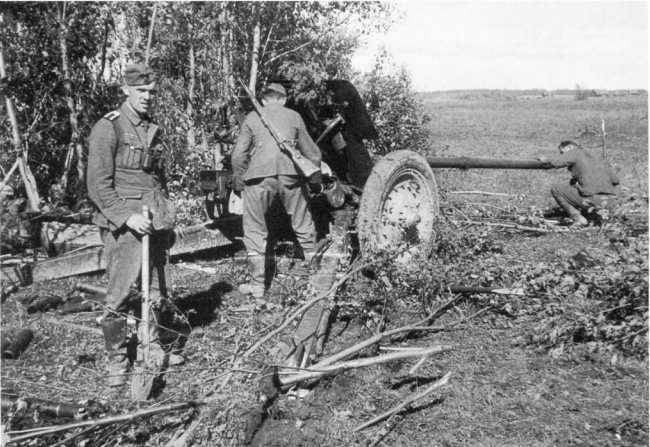
In September 1941, the captured F-22 was adopted by the Wehrmacht under the designation 7,62 cm FK296 (r). Since a significant amount of 76,2-mm armor-piercing shells could not be captured, German enterprises began to produce PzGr armor-piercing shells. 39, which had better armor penetration than the Soviet UBR-354A. In November, the PzGr sub-caliber projectile was introduced into the ammunition. 40. With new anti-tank shots, the FK 296 (r) guns were used on the Eastern Front and in North Africa.
In August 1941, the command of the Afrika Korps requested a mobile artillery unit capable of moving in the desert off-road and capable of fighting British and American tanks protected by anti-cannon armor. For this, it was supposed to use the chassis of off-road trucks or half-track tractors. As a result, the choice fell on the Sd Kfz 6 half-track artillery tractor and the 76,2 mm FK296 (r) cannon, which, by the standards of 1941, had good armor penetration. To speed up the manufacturing process of the anti-tank self-propelled gun, its design was simplified as much as possible. The gun, together with the wheels, was installed on a prepared platform in the back of the Sd Kfz 6 tractor. To protect the crew from bullets and shrapnel, an armored cabin was assembled from 5 mm sheets. Front protection was provided by a standard gun shield.
The final assembly of nine machines was completed by Alkett on 13 on December 1941. In the Wehrmacht, the self-propelled gun was designated 7,62 cm FK36 (r) auf Panzerjäger Selbstfahrlafette Zugkraftwagen 5t “Diana” or Selbstfahrlafette (Sd.Kfz.6 / 3). In January 1942, self-propelled guns arrived in North Africa. The vehicles were transferred to the 605th anti-tank fighter battalion and participated in combat operations under the command of Rommel, starting from 21 on January 1942.
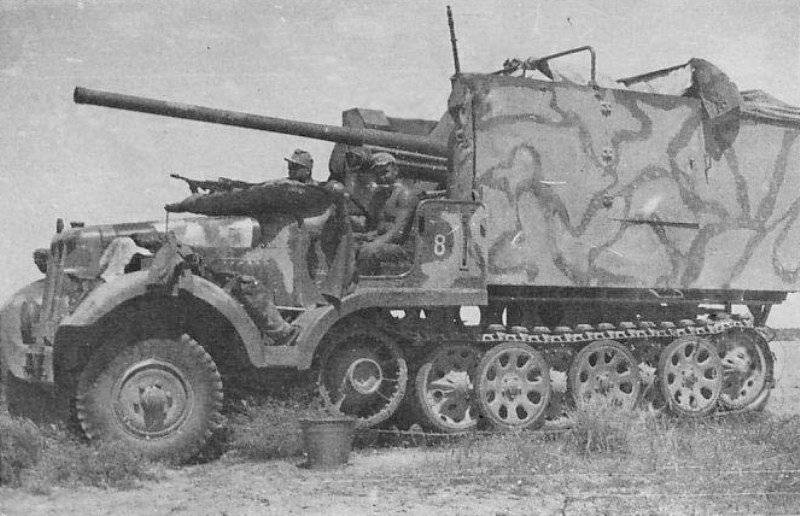
Although the tank destroyer self-propelled guns "Diana" was created, as they say, "on the knee", was an improvisation of wartime and had a number of significant shortcomings, it performed well against British armored vehicles. In their reports, the commanders of the Selbstfahrlafette (Sd.Kfz.6 / 3) noted that at a distance of up to 2000 m armor-piercing shells confidently hit light tanks and armored vehicles of the enemy. At half the range of the guns penetrate the armor of infantry tanks Matilda Mk.II.
In this regard, the British soon began to avoid using tanks, in areas where 76,2 mm self-propelled guns were seen, and heavy artillery and Aviation. As a result of bombing and artillery attacks, all Selbstfahrlafette anti-tank destroyers (Sd.Kfz.6 / 3) were lost by the beginning of December 1942 during the battles for Tobruk and El Alamein. The last two cars participated in repelling the British offensive, which began on October 23, 1942. Although such installations were not officially built anymore, there is reason to believe that other self-propelled guns were created using 76,2 cm FK296 (r) guns in front-line tank repair shops using various chassis.
However, even taking into account the successful use of captured F-22 in North Africa and on the Soviet-German front, these guns were not optimal for use in anti-tank defense. German calculations complained about inconvenient guidance organs located on different sides of the shutter. A lot of complaints also caused a sight. In addition, the power of the gun was still not enough to confidently break through the frontal armor of the heavy Soviet KV-1 tanks and British heavy infantry tanks Churchill Mk IV.
Since the F-22 gun was originally designed for a much more powerful ammunition and had a large margin of safety, by the end of the 1941 year, a project was developed to upgrade the F-22 to the 7,62 cm Pak 36 (r) anti-tank gun. In captured weapons arr. 1936 was chambered chamber, which allowed the use of a sleeve with a large internal volume. The Soviet sleeve had a length of 385,3 mm and a flange diameter of 90 mm. The new German sleeve was 715 mm long with a diameter of 100 mm flange. Thanks to this, the powder charge was able to increase in 2,4 times. Due to the increased return, a muzzle brake was installed. In fact, German engineers returned to the fact that V.G. Grabin proposed in the year 1935.
The transfer of the handles of the gun guidance drives to one side with a sight made it possible to improve the working conditions of the gunner. The maximum vertical angle was reduced from 75 ° to 18 °. In order to reduce weight and visibility at the position of the gun received a new armor shield of reduced height.
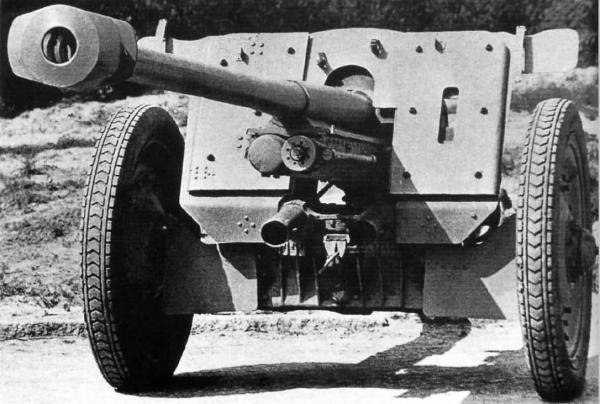
Due to the increase in muzzle energy, it was possible to significantly increase armor penetration. German armor-piercing tracer with ballistic tip 7,62 cm Pzgr. 39 weighing 7,6 kg had an initial speed of 740 m / s, and at a range of 500 m, it could normally penetrate 108 mm armor. Smaller shots were fired with a submunition armor-piercing projectile 7,62 cm Pzgr.40. At an initial speed of 990 m / s, a shell weighing 3,9 kg at a distance of 500 m at right angles pierced 140 mm armor. The ammunition could also include cumulative shells 7,62 cm Gr. 38 Hl / B and 7,62 cm Gr. 38 Hl / With a mass of 4,62 and 5,05 kg, which, regardless of range, normally ensured the penetration of 90 mm armor. For completeness, it is appropriate to compare the 7,62 cm Pak 36 (r) with the 75 mm anti-tank gun 7,5 cm Pak. 40, which in terms of cost, a set of operational, operational and combat characteristics can be considered the best of those mass-produced in Germany during the war. At a range of 500 m 75-mm armor-piercing projectile normal could penetrate 118 mm armor. Under the same conditions, the armor penetration of a submunition shell was 146 mm. Thus, it can be stated that the guns had almost equal characteristics of armor penetration, and confidently ensured the destruction of medium tanks at real firing ranges. But at the same time 7,5 cm Pak. 40 was lighter than 7,62 cm Pak 36 (r) by about 100 kg. It is worth recognizing that the creation of the 7,62 cm Pak 36 (r) was certainly justified, since the cost of the conversion was an order of magnitude cheaper than the cost of a new gun.
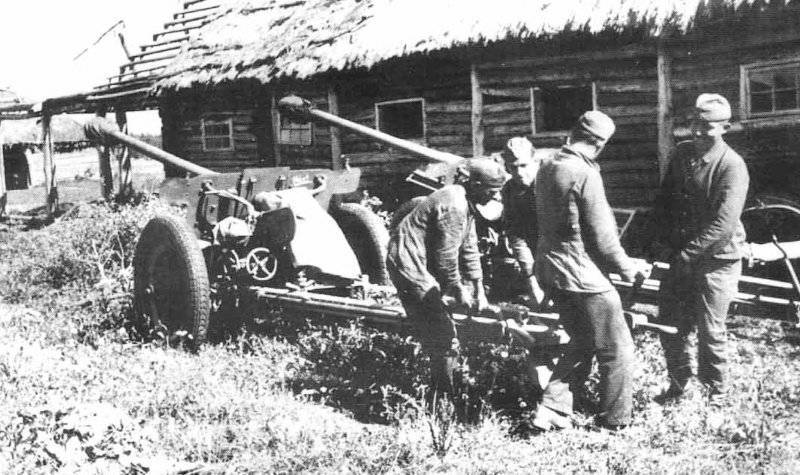
Prior to mass production of 7,5 cm Pak. 40 anti-tank gun 7,62 cm Pak 36 (r) converted from the Soviet "division" F-22 was the most powerful German anti-tank artillery system. Given the high armor penetration and the fact that the total release of guns 7,62 cm Pak 36 (r) exceeded 500 units, they are in 1942-1943 years. had a significant impact on the course of hostilities. The Germans successfully used the converted 76,2-mm anti-tank guns in North Africa and on the Eastern Front. The frontal armor of Soviet medium tanks T-34 and American M3 Lee could be shot at ranges up to 2000 m. At shorter firing distances to German 76,2-mm armor-piercing shells 7,62 cm Pzgr. 39 were vulnerable Soviet heavy tanks KV-1 and well-protected British Matilda II and Churchill Mk IV. The incident that occurred on 22 on July 1942 is widely known when the calculation of grenadier G. Halm from the 104 grenadier regiment in the battle of El Alamein with fire Pak 36 (r) within nine minutes destroyed nine English tanks. In the middle and in the second half of the 1942 of the year, these guns inflicted very significant losses on Soviet tank units operating in the Kharkov and Stalingrad directions. Our tankers called the anti-tank gun 7,62 cm Pak 36 (r) - "viper".
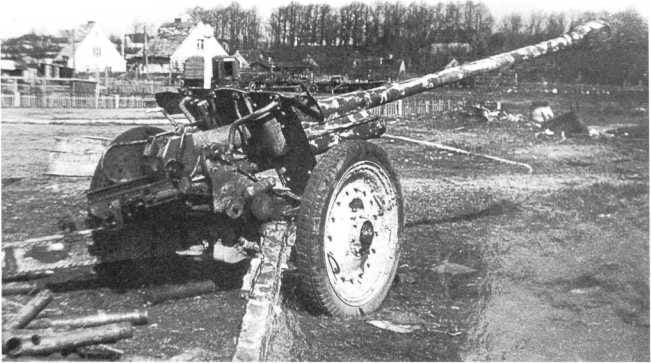
After the defeat of German troops near Stalingrad, the role of 7,62 cm Pak 36 (r) in anti-tank defense decreased. About 30 guns, our soldiers managed to capture back, and they entered service with several anti-tank divisions.
After testing in the USSR, the 76-mm Pak 36 (r) gun, the issue of launching this gun in production was considered. But V.G. Grabin refused, under the pretext that the release of more powerful systems is planned. In fairness, it is worth saying that in addition to the 57-mm ZiS-2, our designers during the war did not manage to launch another truly effective anti-tank gun in a series. The refinement of the X-NUMX-mm gun D-85, created under the leadership of the chief designer F. F. Petrov, was delayed, and it entered service already in the post-war period. Field 44-mm gun BS-100, created by V.G. Grabin, at first did not have a sight for direct fire and armor-piercing shells in the ammunition. In addition, this powerful gun was distinguished by its large mass and dimensions, and its transportation was possible only by mechanical traction. In the final period of the war, BS-3 guns were delivered to the hull and artillery of the RGK.
Although due to combat losses and breakdowns, the number of converted 76,2-mm anti-tank guns was constantly decreasing, as of March 1945, the Wehrmacht had 165 Pak 36 (r) guns.
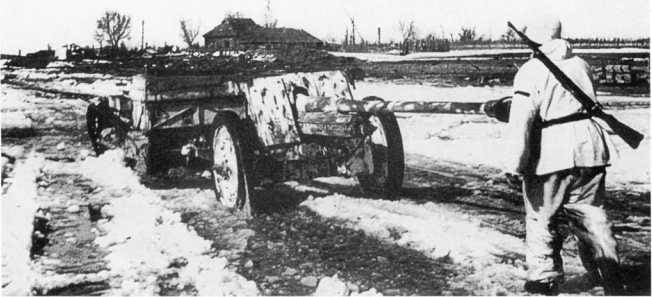
For transporting these guns, Soviet captured tanks with dismantled towers, or French French and British-made Renault UE and Universal Carrier tracked tractors, were often used.
In addition to using the towed version, the 7,62 cm Pak 36 (r) guns were armed with anti-tank self-propelled guns Marder II (Sd.Kfz.132) and Marder III (Sd.Kfz.139). The tank destroyer Marder II was an installation with an open wheelhouse on the chassis of the light tank PzKpfw II Ausf.D. In parallel with the construction of the 76,2-mm self-propelled guns, work was carried out on the installation of the 75-mm 7,5 cm Pak guns. 40 on the chassis of Pz.Kpfw.II Ausf.F. Moreover, both types of machines were designated as "Marder II". In total, more than 600 Marder II self-propelled guns were built, of which 202 units with 7,62 cm Pak 36 (r) guns.
When creating the tank destroyer Marder III, the Czech light tank chassis Pz Kpfw 38 (t) was used. In terms of their fire characteristics, both cars were equivalent.
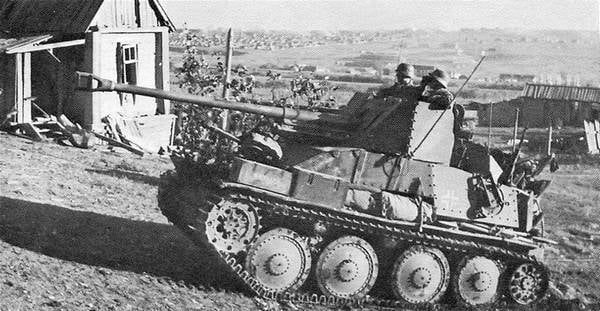
"Marders" were actively used on the Eastern Front. Contrary to claims that the Germans used their anti-tank self-propelled guns only from prepared positions or behind the attack line, often the anti-tank guns were used to directly accompany the infantry, which led to heavy losses. Nevertheless, in general, self-propelled guns paid off. The most advantageous distance for hitting tanks was considered the distance to 1000 meters. On one wrecked tank T-34 or KV-1 accounted for 1-2 hits. The high intensity of hostilities led to the fact that on the Eastern Front, tank destroyers with 76,2-mm guns disappeared in the 1944 year.
76 mm divisional gun mod. 1939 g. (Ф-22УСВ)
After the command of the Red Army cooled down to the "universal" gun F-22 in the spring of 1937, a competition was announced for the creation of a new 76,2-mm divisional gun. V.G. Grabin urgently started designing a new “division”, for which for some reason he assigned the F-22USV index, bearing in mind that the new gun is only an upgrade of the F-22. In fact, constructively it was a completely new weapon. In the summer of the 1939 year, military tests of the gun took place, in the same year it was adopted under the name 76-mm gun of the 1939 model of the year, and the designation F-22USV was also used in wartime documents.

Compared to the F-22, the weight and dimensions of the new division gun were reduced. The mass in combat position was 1485 kg. The gun had a modern design at the time of creation with sliding beds, suspension and metal wheels with rubber tires, which allowed transportation along the highway at a speed of 35 km / h. For towing, the most commonly used horse cart or ZIS-5 trucks.
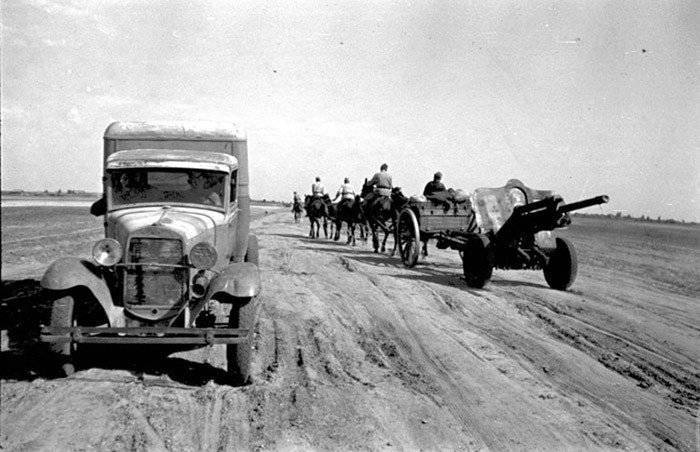
The gun’s combat rate of fire was 12-15 rds / min. A well-trained crew could release an enemy without correcting the guidance of 20 shells per minute. Penetration was lower than that of the F-22, but by the standards of the 1941 of the year it was considered good. With a barrel length of 3200 mm, the initial velocity of the UBR-354A armor-piercing projectile was 662 m / s, and at a range of 500 m, he normally penetrated 70 mm armor. Thus, in terms of its ability to penetrate the armor of enemy tanks, the F-22USV gun was at the level of the 76,2-mm division gun arr. 1902 / 30 g with a barrel length of 40 calibres.
At the beginning of the 1941 year, due to the presence in the troops of a sufficient number of 76,2-mm guns and the planned transition of the division artillery to the caliber 107-mm production of guns mod. 1939 was discontinued. With the outbreak of war, according to the mobilization plan, the production of F-22USV was re-deployed. Until the end of the 1942 year, more than 9800 guns were delivered.
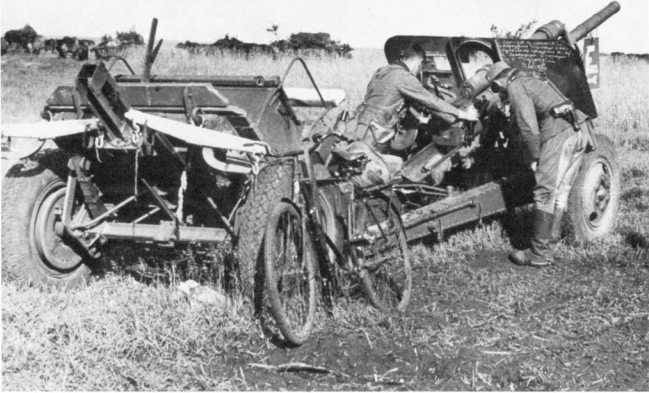
During the fighting, the enemy captured several hundred F-22USV. The guns were originally used in their original form under the name 7,62 cm FK297 (r).
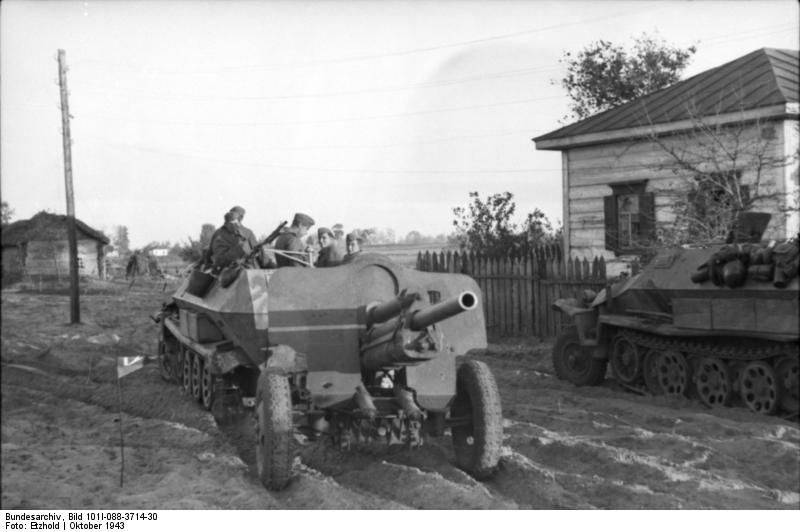
However, taking into account the fact that the Germans constantly lacked specialized anti-tank guns, a significant part of the captured F-22USV was converted into a modification of the 7,62 cm FK 39. There are few details about this gun, a number of sources say that approximately 300 76-mm guns arr. 1939 g. Altered to ammunition from the 7,62 cm Pak 36 (r), after which the muzzle brake was installed on the barrel. However, given the fact that the strength of the SPM artillery was lower than that of the F-22, this seems doubtful. The ballistic characteristics of the gun are also unknown, according to unconfirmed reports, an armor-piercing projectile at a range of 500 m could penetrate the 75-mm frontal armor of the KV-1 tank.
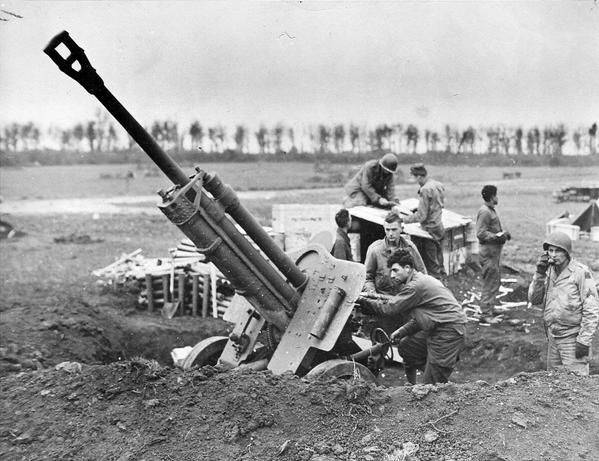
The 7,62 cm FK 39 guns were used by the Wehrmacht until the last days of the war. But such fame as 7,62 cm Pak 36 (r), they have not received. Several redesigned 76,2 mm guns were captured by the Allies in France.
76 mm divisional gun mod. 1942 g. (ZIS-3)
Although 76,2-mm divisional gun mod. The 1939 of the year compared to the “universal” F-22 gun was certainly more balanced, for the “division” the SPM was too high, which made it difficult to disguise it on the battlefield. Gun mass arr. 1939 of the year was also large enough, which negatively affected mobility. Placing the sight and guidance mechanisms on opposite sides of the barrel made it difficult to fire direct fire at rapidly moving targets. The shortcomings of the guns led to the replacement of its more successful and technologically advanced 76,2-mm divisional gun mod. 1942 g. (ZIS-3).
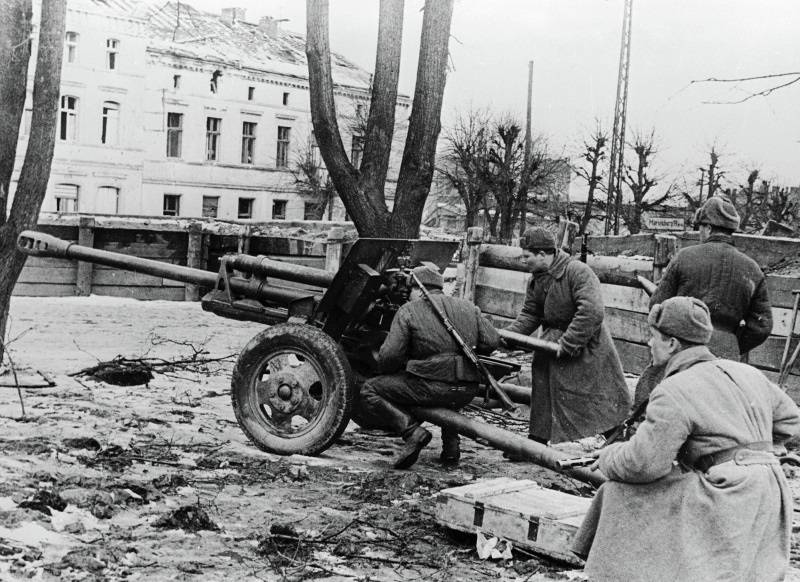
Structurally, the ZiS-3 was created by imposing the swinging part of the previous F-22USV model on the mounts of the anti-tank 57-mm ZiS-2 gun, while maintaining the ballistics of the divisional gun 1939 d. Since the ZiS-2 carriage was designed for lower recoil force, a muzzle brake appeared on the ZiS-3 barrel, which was absent in the F-22USV. When designing the ZiS-3, an important drawback of the F-22USV was eliminated - the placement of aiming handles on opposite sides of the gun barrel. This allowed the calculation numbers of four people (commander, gunner, loader, carrier) to perform only their functions. When creating a new tool, much attention was paid to its manufacturability and cost reduction in mass production. Operations were simplified and reduced (in particular, high-quality casting of large parts was actively introduced), technological equipment and requirements for the machine park were thought out, requirements for materials were reduced, their savings were introduced, unification and in-line production of units were provided for. All this made it possible to obtain a gun that was almost three times cheaper than the F-22USV, while not less effective.
The development of the gun was started by V. G. Grabin in May 1941, without the official assignment of the GAU. Serial production of the ZiS-3 was started at the end of the 1941 year, at that time the gun was not put into service and was produced “illegally”. In early February 1942, official tests took place, which in fact were a formality and lasted only five days. According to their results ZiS-3 entered service with the February 12 1942 year. The order to adopt the new 76,2-mm gun was adopted after they began to be used in hostilities.
The troops received three varieties of 76-mm guns arr. 1942 g., Characterized by elevation angles, riveted or welded frames, push-button or lever release, shutter and sights. The guns sent to the anti-tank artillery were equipped with PPNNXX-1 or OP2-2 direct-fire sights. The gun could fire at targets in a horizontal plane in the 1 ° sector, depending on the modification, the maximum aiming angle was 54 ° or 27 °.
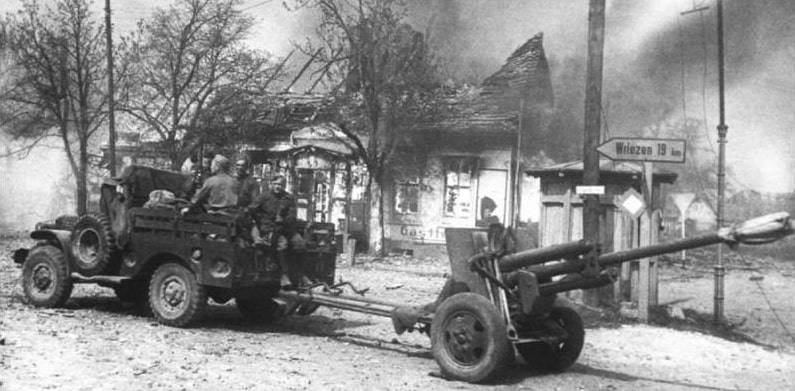
The mass of the gun was in the combat position 1200 kg, with the gun front in the stowed position - 1850 kg. Towing was carried out by horse-drawn carts, GAZ-67, GAZ-AA, GAZ-AAA, ZiS-5 cars, as well as Studebaker US6 or Dodge WC-51 cars supplied from the middle of the war by Lend-Lease.
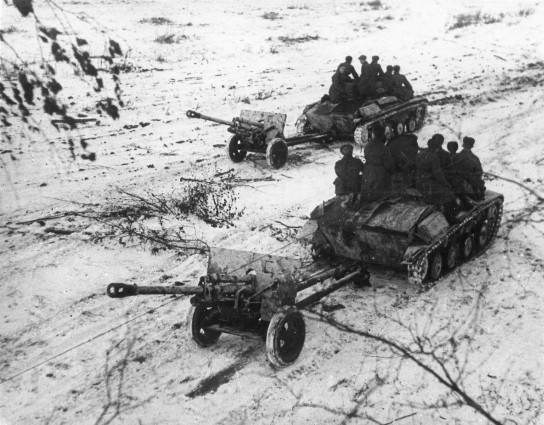
Often, the T-60 and T-70 light tanks were used to transport the guns of the divisions attached to the tank units, the protection of which after 1943 did not leave them a chance to survive on the battlefield. At the same time, calculations and boxes with shells were located on the armor.
Since the 1944 of the year, due to the reduced efficiency of the 45-mm M-42 guns and the lack of 57-mm ZiS-2 guns, the ZiS-3 gun despite the insufficient armor penetration for that time became the main anti-tank gun of the Red Army.
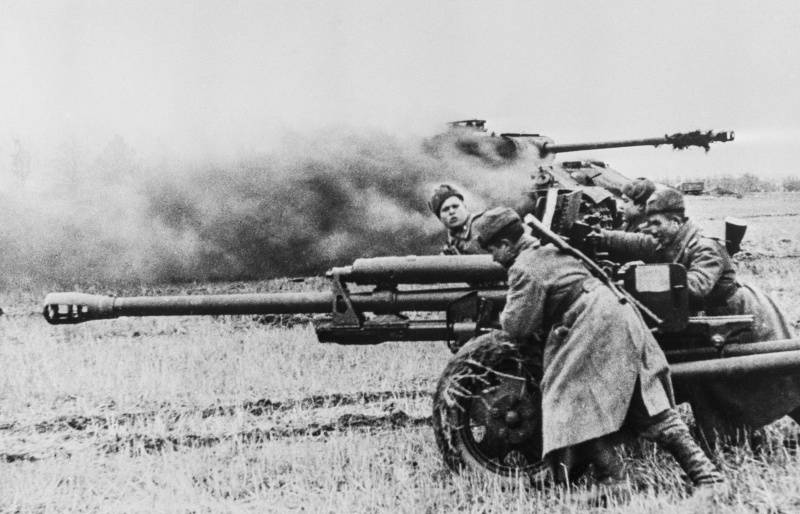
An armor-piercing 76,2-mm UBR-354A projectile could penetrate the frontal armor of a medium German tank Pz.KpfW.IV Ausf.H from a distance less than 300 m. m in the side projection. The new German tank PzKpfW V was also weakly vulnerable in the frontal projection for the ZiS-3. At the same time, the ZiS-300 confidently hit the PzKpfW V and Pz.KpfW.IV Ausf.H. The introduction of the 3-mm BR-3P sub-caliber projectile in the 1943 year improved the anti-tank capabilities of the ZiS-76,2, allowing it to confidently hit 354 mm armor at distances closer than 3 mm, but the 500 mm armor remained unbearable for it.
The relative weakness of the anti-tank capabilities of the ZiS-3 was recognized by the Soviet military leadership, however, until the end of the war, it was not possible to replace the 76,2-mm guns in the anti-tank fighter units. 57-mm anti-tank guns ZiS-2 in 1943-1944 years were produced in the amount of 4375 units, and ZiS-3 for the same period - in the amount of 30052 units, of which about half were sent to the fighter-anti-tank units. The insufficient armor penetration of the guns was partially offset by the tactics of use, aimed at defeating the vulnerabilities of armored vehicles. The fight against German tanks at the final stage of the war was largely facilitated by a decrease in the quality of armored steel. Due to the lack of alloying additives, the armor smelted in Germany since 1944 had an increased hardness due to the increased carbon content and was brittle. When a shell hit, even without breaking through the armor, chips often occurred on the inside, which led to the defeat of crew members and damage to internal equipment.
During the Great Patriotic War, German troops managed to capture several hundred divisional cannons of the 1942 model. The enemy used the ZiS-3 under the designation 7,62 cm FK 298 (r).
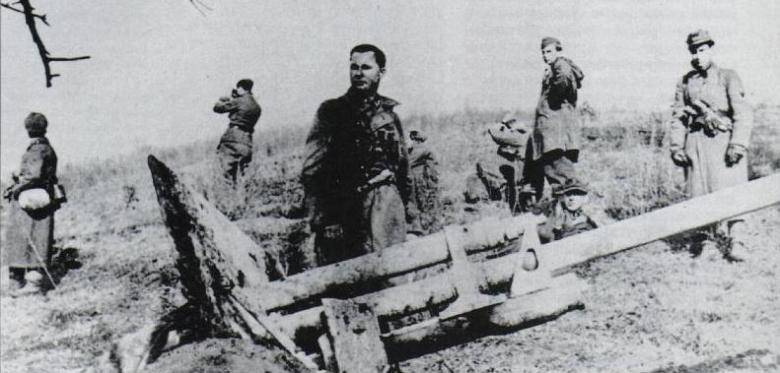
Since the ZiS-3 had an almost ideal design for a gun of this caliber, German engineers did not make any changes, and the gun fought in its original form.
Photos have been preserved that show that the Germans used captured T-76,2 light tanks with dismantled towers to transport captured 70-mm divisional cannons. Unlike the 7,62 cm Pak 36 (r), the 7,62 cm FK 298 (r) guns did not earn such fame as anti-tank guns and, apparently, were used mainly to provide fire support and destroy field fortifications. Nevertheless, the ZiS-3 available in the Wehrmacht were purposefully supplied with armor-piercing shells and fought until the end of hostilities. In the initial period of the war, the enemy had at his disposal large stocks of 76,2-mm rounds with high-explosive and shrapnel grenades. The source of the armor-piercing shells was mainly the unexpended ammunition of the damaged Soviet T-34 and KV-1 tanks, with 76,2-mm F-34 and ZiS-5 guns. Although the gun 7,62 cm FK 298 (r) in armor penetration was significantly inferior to the main German anti-tank 75-mm gun 7,5 cm Pak. 40, from a distance of 500 m 76,2-mm armor-piercing projectile pierced the frontal armor of the T-34 medium tank.
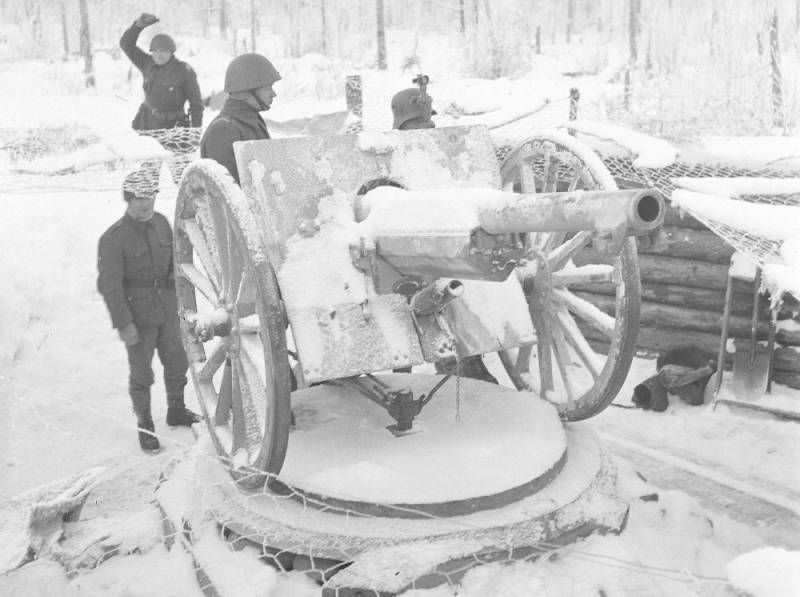
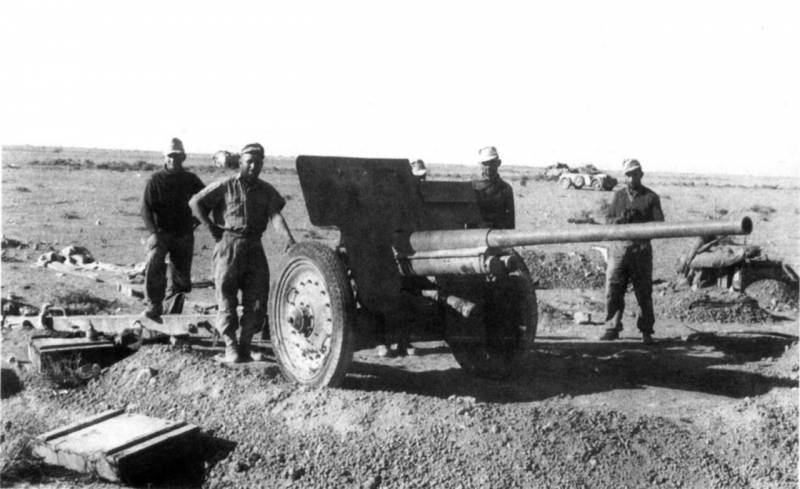
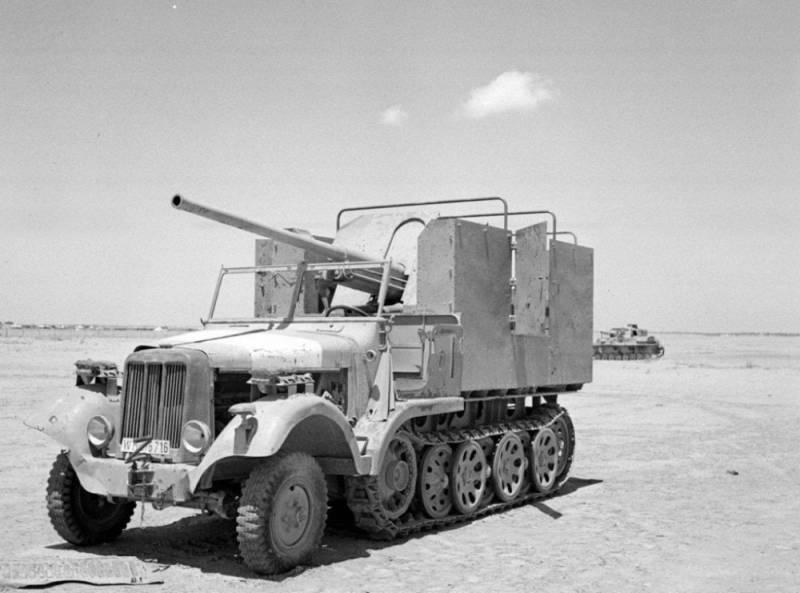
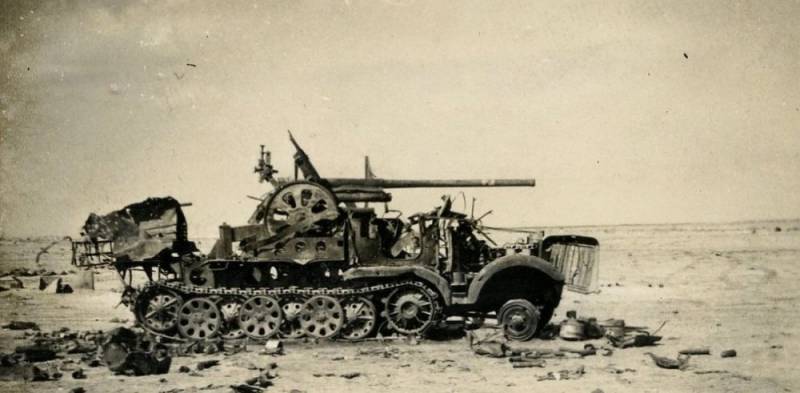
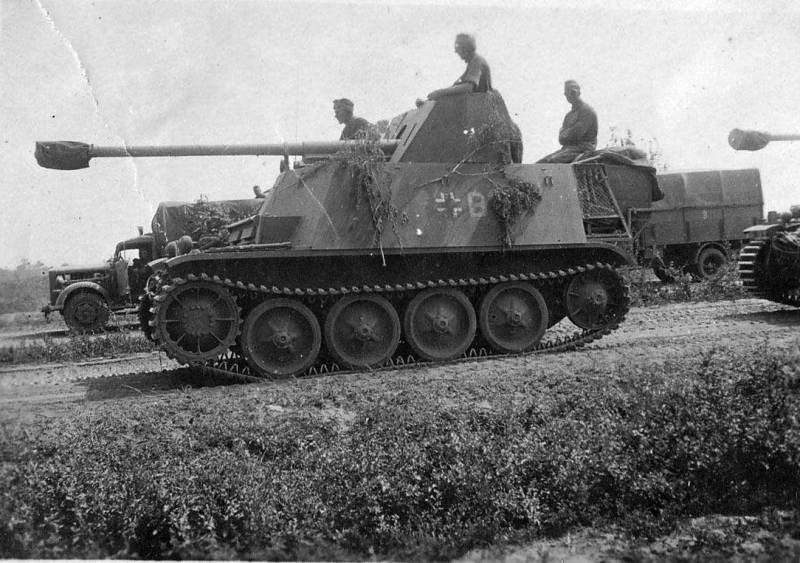
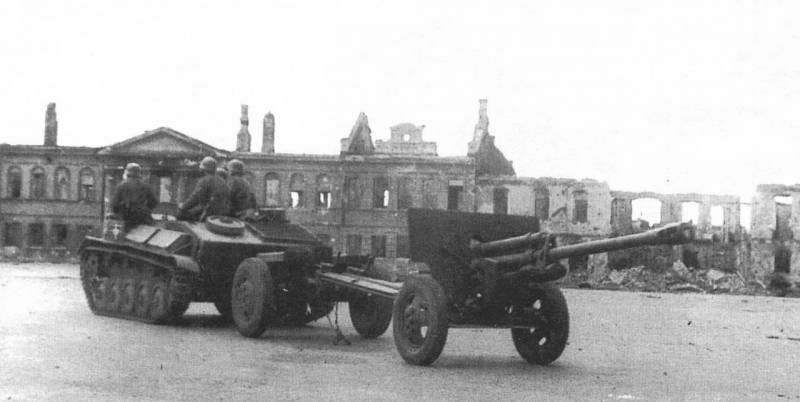
Information